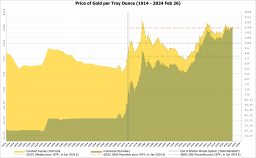| Revision as of 15:03, 25 November 2014 edit49.145.123.0 (talk) →See also← Previous edit | Revision as of 00:05, 27 November 2014 edit undoBobby131313 (talk | contribs)Extended confirmed users, File movers, Pending changes reviewers, Rollbackers1,819 edits Undid revision 635386270 by 49.145.123.0 (talk)Next edit → | ||
| Line 58: | Line 58: | ||
| * ] | * ] | ||
| * ] | * ] | ||
| * ] | |||
| ==Notes== | ==Notes== | ||
Revision as of 00:05, 27 November 2014
For the U.S. city, see Gold Bar, Washington. For the confectionary product, see Gold (biscuit). "Gold brick" redirects here. For other uses, see gold brick (disambiguation).
A gold bar, also called a gold ingot or gold bullion, is a quantity of refined metallic gold of any shape that is made by a bar producer meeting standard conditions of manufacture, labeling, and record keeping.
Larger gold bars that are produced by pouring the molten metal into molds are called ingots. Smaller bars may be manufactured by minting or stamping from appropriately rolled gold sheets.
The standard gold bar held as gold reserves by central banks and traded among bullion dealers is the 400-troy-ounce (12.4 kg or 438.9 ounces) Good Delivery gold bar.
The kilobar, which is 1000 grams in mass (32.15 troy ounces), is the bar that is more manageable and is used extensively for trading and investment. The premium on these bars when traded is very low over the spot value of the gold making it ideal for small transfers between banks and traders. Most kilobars are flat, although some investors, particularly in Europe, prefer the brick shape.
Types
Gold bars are classified into two different types, cast and minted, based on their method of manufacturing. Cast bars are made by pouring molten gold into an ingot mold to shape the gold product. Minted bars are made from gold blanks that have been hand cut to the required dimensions from a flat piece of gold. Markings are almost always applied by presses.
Standard bar weights
Gold is measured in troy ounces, often simply referred to as ounce when the reference to gold is evident. One troy ounce is equivalent to 31.1034768 grams.
Commonly encountered in daily life is the avoirdupois ounce, an Imperial weight in countries still using British weights and measures or United States customary units. The avoirdupois ounce is lighter than a troy ounce; one avoirdupois ounce equals 28.349523125 grams.
The standard gold bar held and traded internationally by central banks and bullion dealers is the Good Delivery bar with a 400 oz (troy-ounce) (12.4 kg or 438.9 ounces) nominal weight. However, its precise gold content is permitted to vary between 350 oz and 430 oz. The minimum purity required is 99.5% gold. These bars must be stored in recognized and secure gold bullion vaults to maintain their quality status of Good Delivery. The recorded provenance of this bar assures integrity and maximum resale value.
- One tonne = 1000 kilograms = 32,150.746 troy ounces.
- One kilogram = 1000 grams = 32.15074656 troy ounces.
- One tola = 11.6638038 grams.
- One tael = 50 grams.
- TT (Ten Tola) = 117 grams (3.75 oz)
Tola is a traditional Indian measure for the weight of gold and prevalent to this day. Many international gold manufacturers supply tola bars of 999.96 purity.
Largest gold bar


The world's largest gold bar stands at 250 kg (551 lb), measuring at the base 45.5 cm × 22.5 cm and 17 cm high with 5 degree draft angle (equal to 15,730 cm³, or 17.9 in × 8.9 in × 6.7 in ≈ 1062.04 in³). It was manufactured by the Mitsubishi Materials Corporation, a subsidiary of Mitsubishi. It went on display at the Toi gold mine on July 11, 2005. Its gold content was valued in 2005 at 400 million yen (approximately US$3,684,000 at the time),
As of 29 October 2014, it is worth approximately US$10.33M, not accounting for the premium associated with being the world's largest gold bar.
Also, note that gold prices are quite volatile and that the inflation-adjusted historical prices, as per the chart to the right, suggest a median price of US$5,700,000, and a range up to US$11,000,000 or down to US$3,400,000 with 80 percent confidence.
See also
- Precious metal
- Fort Knox Bullion Depository
- Gold as an investment
- Gold coin
- Millesimal fineness
- Official gold reserves
- Doré bar
- Bullion
- Ingot
- Silver
- Platinum
Notes
- This is the official rate of taels in mainland China since the country implemented the metric system. In Taiwan and Hong Kong a tael is equivalent to 37.429g.
References
- "What is a gold bar?".
- "Full List of Official Good Delivery Rules". lbma.org. Retrieved April 11, 2012.
- "Historical Exchange Rates". OANDA Services. Retrieved 14 January 2010.
- "Three Diamonds Cast Gold-Medal Gold Bar". The Japan Journal. November 2005. Retrieved March 10, 2010.
- "Mitsubishi makes record-size gold bar". Japan Times. June 17, 2005. Retrieved March 10, 2010..
- "Main Content Interactive gold price chart and downloads" World Gold Council


